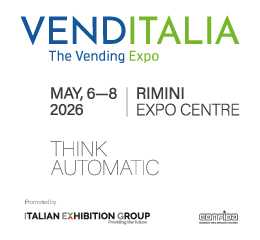Share your coffee stories with us by writing to info@comunicaffe.com.
Asia has increasingly been looked upon as a promising region for the global coffee market over the past few years. In fact, latest research from Mintel shows that Japan and Indonesia are among the world’s largest coffee retail markets by volume.
Japan (304,000 tonnes) and Indonesia (268,000 tonnes) are ranked within the top five global coffee retail markets, with the US leading the way as the largest (607,000 tonnes)*, followed by Brazil (425,000 tonnes), and Germany (424,000 tonnes).
What’s more, Asia’s emerging markets will play a big role in the future of the global coffee sector as Mintel research reveals that Indonesia, Vietnam, and the Philippines are estimated to be among the top five fastest growing coffee retail markets by volume between 2017-2021.
Indonesia is expected to grow at a compound annual growth rate (CAGR) of 11.4%, Vietnam at a rate of 9.2% and Philippines by 6.7%. The remaining two fastest growing markets include Turkey (6.8%) and Mexico (6.1%).
Jonny Forsyth, Associate Director, Mintel Food & Drink, said:
“Asia has great growth potential when it comes to coffee, with consumption continuing to rise across the region. Coffee culture has surged in Asia with more and more specialty coffee houses setting up shop in countries like Japan, Singapore, and Indonesia. Big brand coffee chains are also increasing their expansion efforts in the region. Additionally, Asia’s emerging markets have led global coffee growth in years past and will continue, with Indonesia leading this charge.”
When it comes to coffee formats, it seems single-serve coffee (eg pod, bags, pre-filled filters) remains lucrative in more developed markets like the US, but growth has slowed. On the flip side, growth of single-serve coffee is strong in emerging markets, especially in Asia.
Indeed, Asia, Latin America and Middle-East/Africa accounted for almost a quarter (23%) of total global single-serve launches, up from a 14% share in 2014, according to Mintel Global New Products Database (GNPD).
In South Korea, 30% of all coffee launches in 2017 were pods, up from 20% in 2016. Meanwhile, in 2017, one in five (20%) urban Chinese coffee drinkers say they drink drip bag** coffee once a day or more, up from 3% in 2016, according to Mintel research.
“Single-serve coffee growth, though stalling globally, shows huge potential in emerging markets, with Asia being particularly promising because of a growing coffee habit among traditional tea nations like India and China, rising affluence, and rapid urbanisation. Single-serve formats, like the drip bag, are popular among Chinese coffee drinks as they have the familiarity of traditional tea bags. They are also viewed as more natural and less processed than soluble coffee. This suggests drip bags will have much more growth potential in 2018 and beyond,” continued Forsyth.
Global coffee innovation enters the ice age as producers are increasing their investments in chilled ready-to-drink (RTD) coffee
According to Mintel GNPD, 19% of global new coffee launches were iced RTD in 2017; this is up from 16% in 2015 and 17% in 2016. Globally, Japan leads in RTD coffee innovation, accounting for 18% of all iced RTD coffee launches in 2017, down from 20% in 2016. The US follows, accounting for 13% of these launches in 2017, up from 10% in 2016. Mintel research shows that RTD coffee has thrived most in the US which is estimated to have posted steady growth of at least 10% annually in retail sales between 2013-2017.
Finally, the cold brew revolution is being driven by the US and gained significant retail momentum in 2017. Cold brew retail sales in the US were estimated to reach US$38 million in 2017, more than double the US$16 million the market experienced in 2016. In fact, 56% of new RTD coffee launches in the US in 2017 were cold brew, up from 38% in 2016. Furthermore, half of (51%) of US coffee drinks aged 18-34 drank cold brew whether at home or on-the-go in 2017, up from 46% in 2016.
“Global investment in chilled, RTD coffee has increased as producers target a younger coffee drinker who enjoys the format’s taste, refreshment, and indulgence. This is despite the fact that there is a current slowdown in the Japanese market which previously dominated global iced coffee innovation and sales. Cold brew is helping to premiumise the RTD category, and is proving to be better for innovation than other hot-serve formats, with manufacturers continuing to push the format’s boundaries in 2017. Cold brew is developing strongly in the US and will roll-out to more countries in the years ahead,” concluded Forsyth.
*Estimates
**Drip bag coffee is a hybrid of pods and instant coffee















